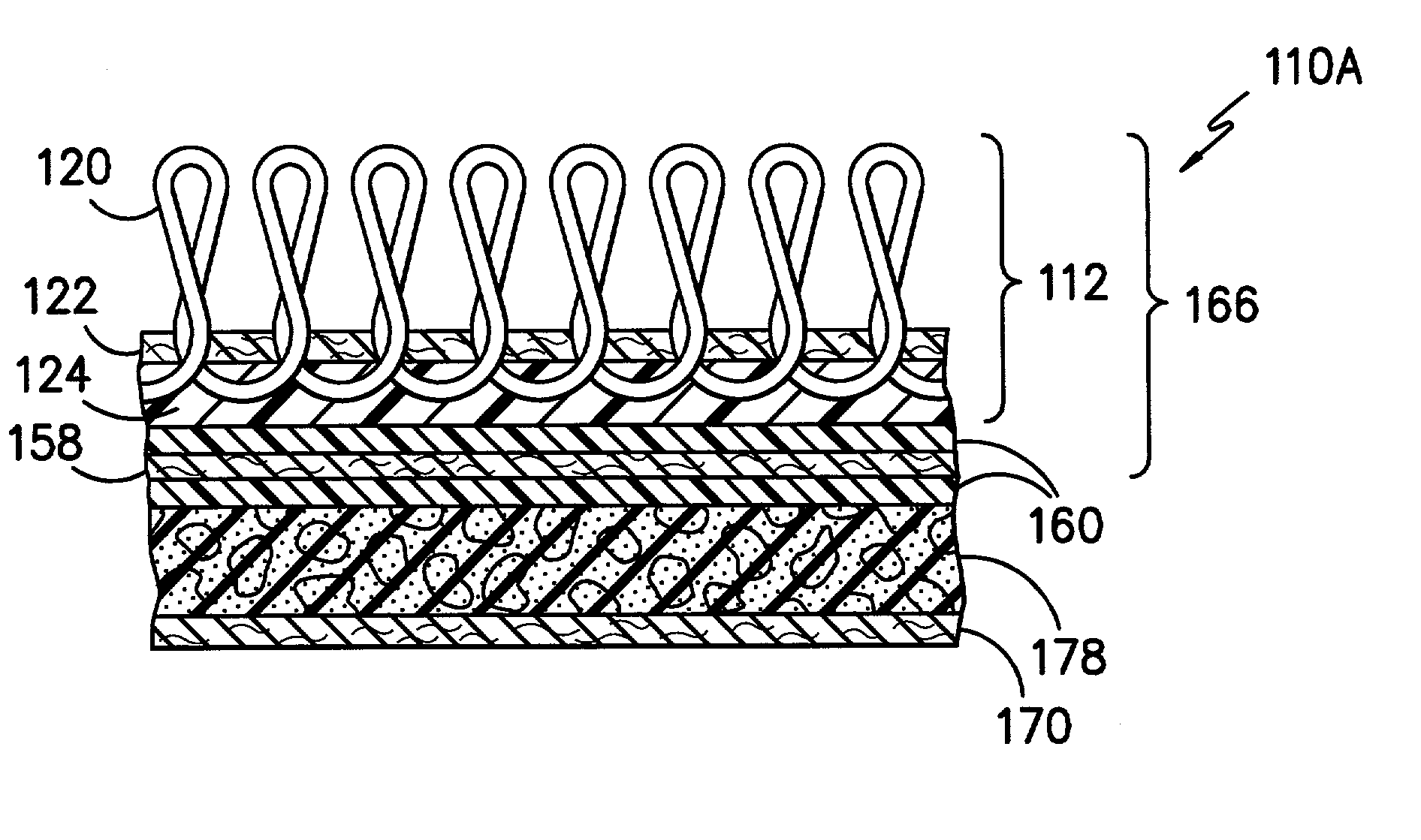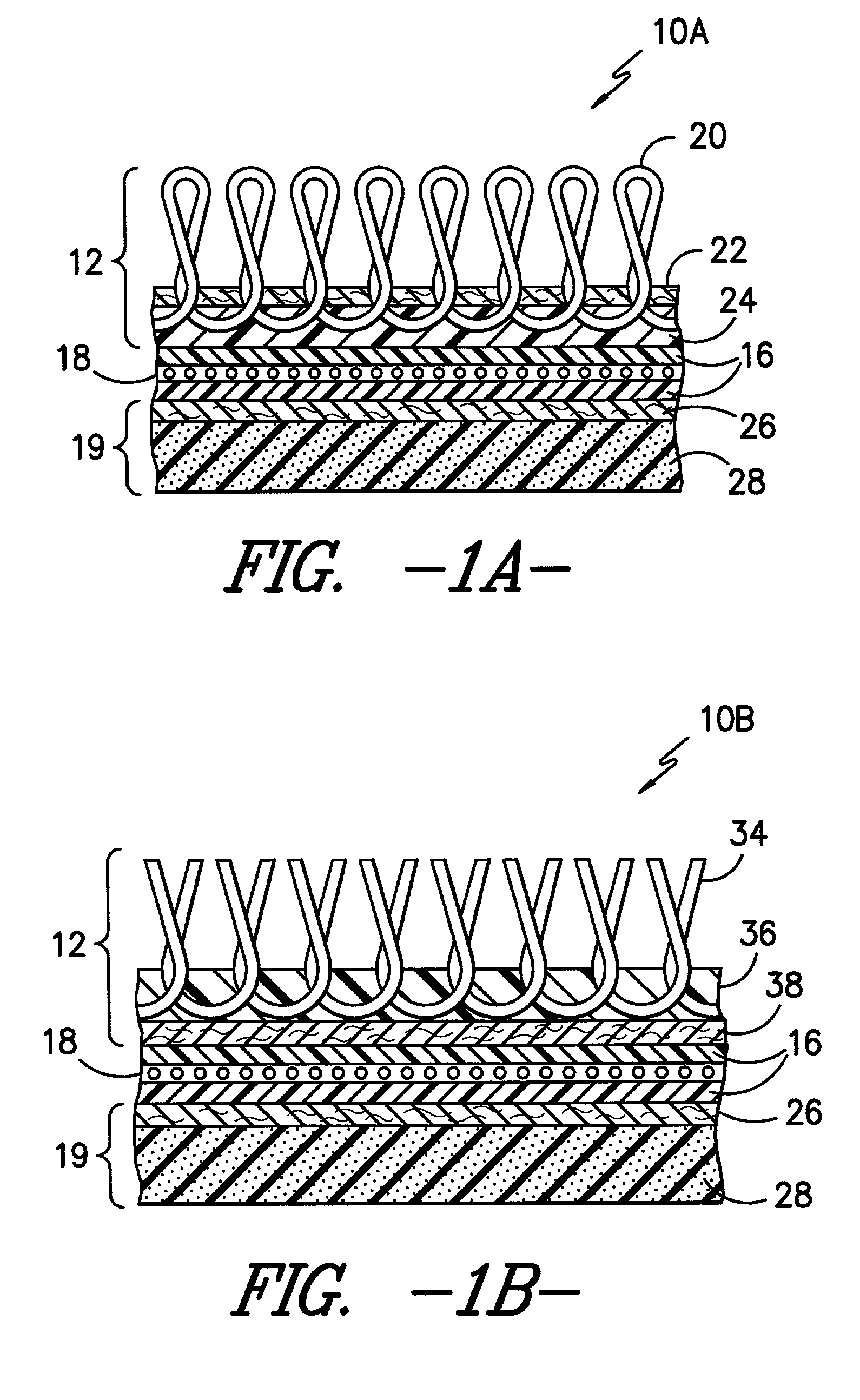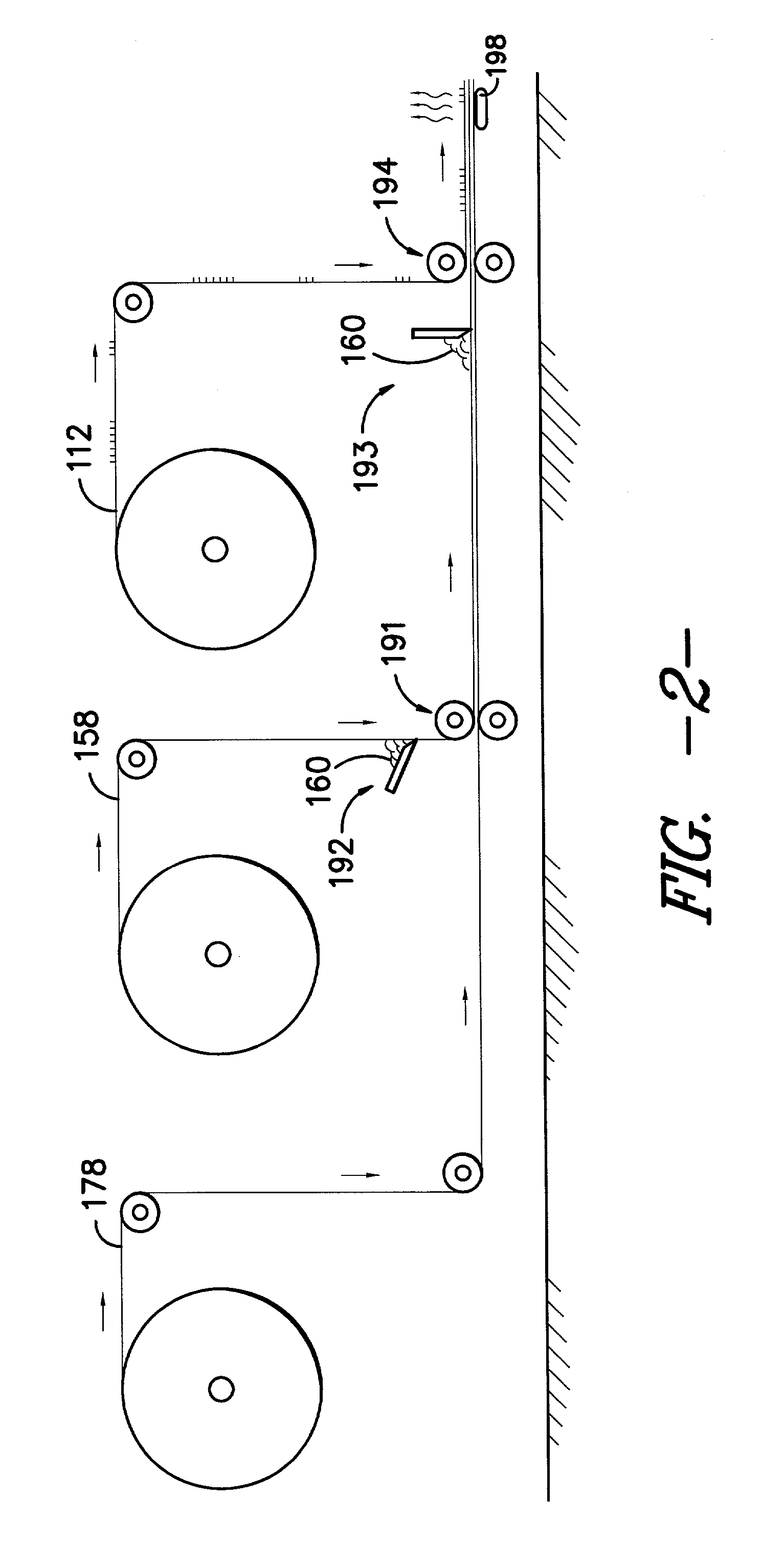Residential carpet product and method
a technology for carpets and products, applied in the field of carpet products, can solve the problems of relatively high production cost of cushion backed carpet tiles, inability to reduce inability to achieve the effect of reducing the cost of floor coverings or carpets, uniform load bearing characteristics, and enhancing dimensional stability
- Summary
- Abstract
- Description
- Claims
- Application Information
AI Technical Summary
Benefits of technology
Problems solved by technology
Method used
Image
Examples
example ii
[0407]
26 Construction Tufted, Textured Loop Pile Face Fiber 100% Milliken Certified WearOn .RTM. Nylon Soil Protectant MilliGuard .RTM. Antimicrobial AlphaSan .TM. Dye Method Millitron .RTM. Dye Injection Printing Gauge 1 / 10 in. (39.4 / 10 cm.) Rows 14.4 / in. (56.7 / 10 cm.) Tufts 143.9 / sq.in. (2230.3 / 100 sq.cm.) Standard Backing PVC-Free UNDERSCORE .TM. cushion Nominal Total Thickness 0.34 in. (8.6 mm) Total Weight 99.9 oz. / sq.yd. (3,387.4 g. / sq.m.) Tile Size 36 .times. 36 in. (914.4 .times. 914.4 mm) Flammability (Radiant Panel ASTM-E-648) .gtoreq.0.45 (Class I) Smoke Density (NFPA-258-T or ASTM-E-662) .ltoreq.450 Methenamine Pill Test Self-Extinguishing (CPSC FF-1-70 or ASTM D 2859) Lightfastness (AATCC 16E) .gtoreq.4.0 at 80 hrs. Crocking (AATCC 165) .gtoreq.4.0 wet or dry Static Electricity (AATCC-134) 20% R.H.,70.degree. F. .ltoreq.3.5 KV Dimensional Stability - Aachener test .ltoreq.0.2% (DIN Standard 54318) Recommended Traffic Heavy Commercial Recommended Maintenance Millicare ...
example iii
[0408]
27 Construction Tufted, Cut Pile Face Fiber 100% Milliken Certified WearOn .RTM. Nylon Soil Protectant MilliGuard .RTM. Antimicrobial BioCare .RTM. Dye Method Millitron .RTM. Gauge 1 / 10 in. (39.4 / 10 cm.) Rows 14.4 / in. (56.7 / 10 cm.) Tufts 143.9 / sq.in. (2230.3 / 100 sq.cm.) Standard Backing PVC-Free UNDERSCORE .TM. cushion Nominal Total Thickness 0.34 in. (8.6 mm.) Total Weight 99.9 oz. / sq.yd. (3,387.4 g. / sq.m.) Tile size 36 .times. 36 in. (914.4 .times. 914.4 mm.) Flammability (Radiant Panel ASTM-E-648) .gtoreq.0.45 (Class I) Smoke Density (NFPA-258-T or ASTM-E-662) .ltoreq.450 Methenamine Pill Test Self-Extinguishing (CPSCFF-1-770 or ASTM D 2859) Lightfastness (AATCC 16E) .gtoreq.4.0 at 80 hrs. Crocking (AATCC 165) .gtoreq.4.0 wet or dry Static Electricity (AATCC-134) 20% R.H., 70.degree. F. .ltoreq.3.5 KV Dimensional Stability -Aachener Text .ltoreq.0.2% (DIN Standard 54318) Recommended Traffic Heavy Commercial Recommended Maintenance MilliCare .RTM. CRI Indoor Air Quality Pr...
example iv
[0409] A tufted carpet is produced by the apparatus and process as illustrated and described in relation to FIG. 2. The carpet has the configuration illustrated and described in relation to FIG. 3A. The production parameters are as follows:
28 Yarn 29 ounces per sq. yd. nylon 6,6 loop pile continuous filament, white, 1350 denier, not plied, not twisted, not heat set Primary Backing 4 ounces per sq. yd. non-woven polyester Pre-coat 16 ounces per sq. yd. SBR Latex filled with 100 parts CaCO.sub.2. Hot Melt Adhesive 36 ounces per sq. yd. modified polypropylene Laminate Reinforcement 2 ounces per sq. yd. Non-woven glass with acrylic binder Urethane Rebond 15 ounces per sq. yd. Foam Coverage Urethane Rebond 16 pounds per cubic foot Foam Density Backing Material 4 ounces per sq. yd. Non-woven (50% polypropylene, 50% polyester)
PUM
 Login to View More
Login to View More Abstract
Description
Claims
Application Information
 Login to View More
Login to View More - R&D
- Intellectual Property
- Life Sciences
- Materials
- Tech Scout
- Unparalleled Data Quality
- Higher Quality Content
- 60% Fewer Hallucinations
Browse by: Latest US Patents, China's latest patents, Technical Efficacy Thesaurus, Application Domain, Technology Topic, Popular Technical Reports.
© 2025 PatSnap. All rights reserved.Legal|Privacy policy|Modern Slavery Act Transparency Statement|Sitemap|About US| Contact US: help@patsnap.com



